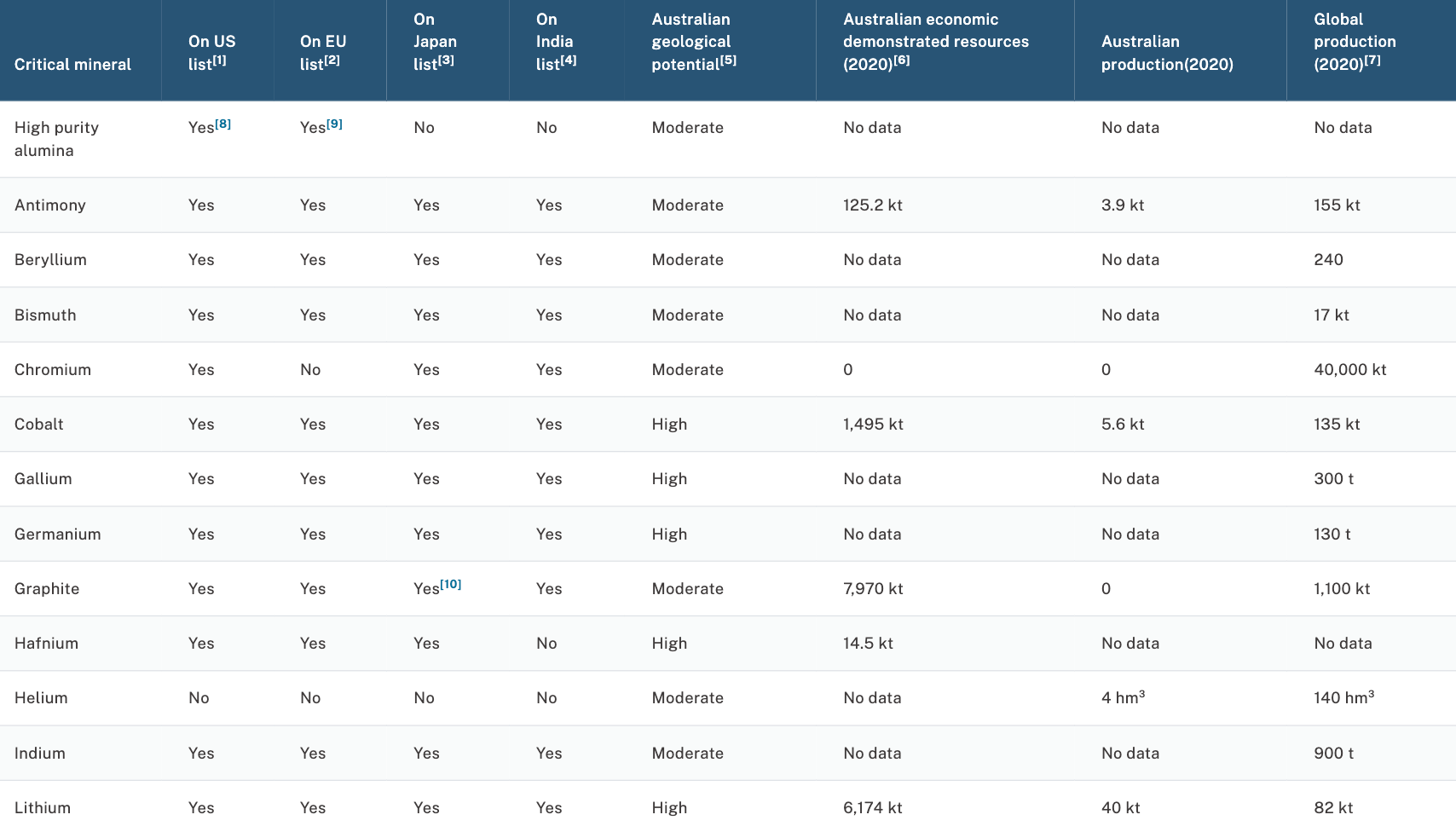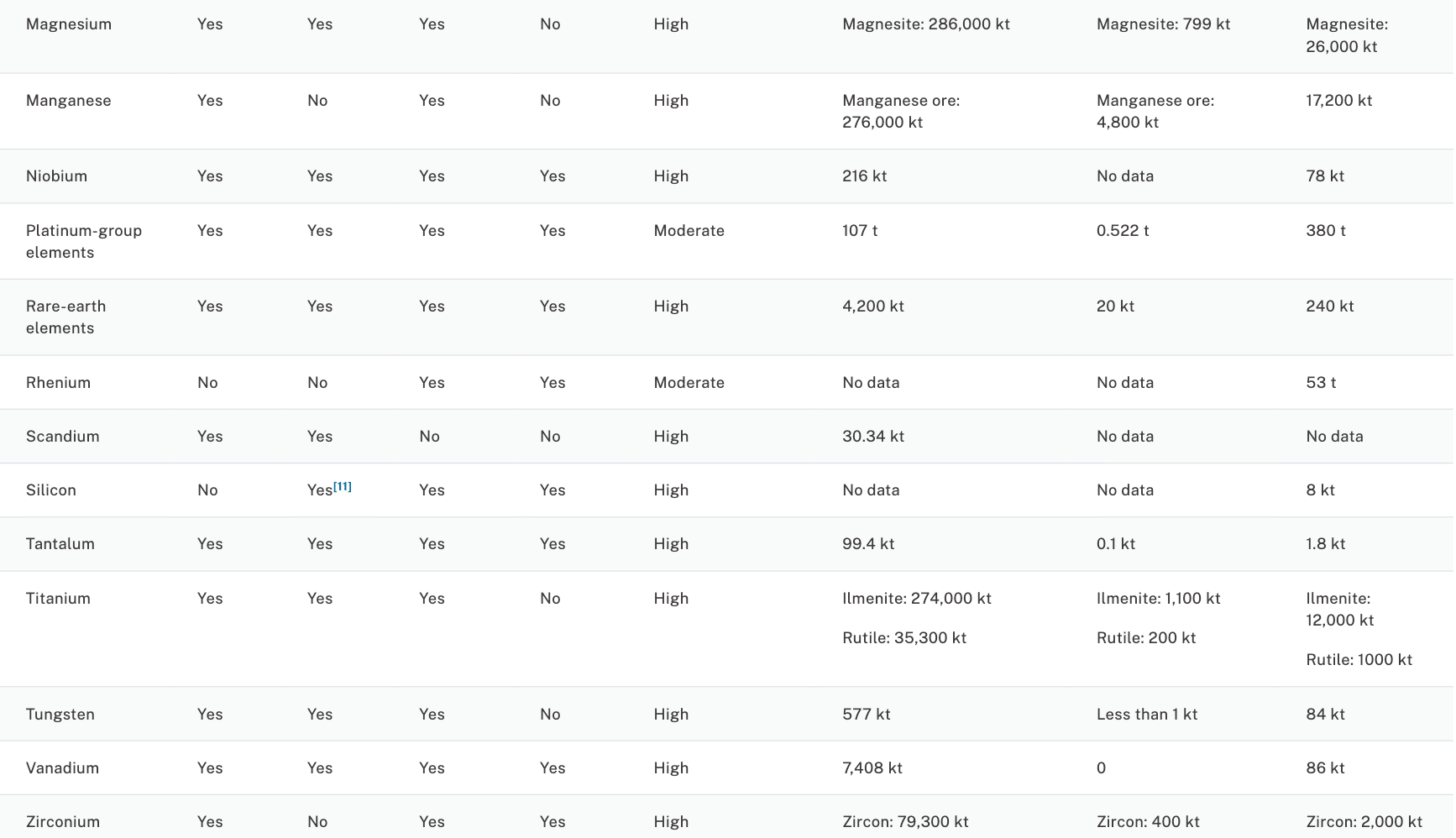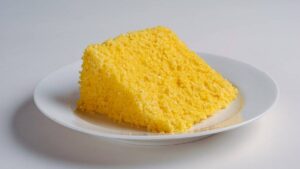Critical Minerals are critical. And also minerals: Tru Datt!

Minerals are key. Via Getty
Welcome to Tru Datt, a Stockhead exclusive featuring the insights and opportunities as per Emanuel Datt – founder and chief investment officer at Datt Capital – a Melbourne-based investment manager focused on identifying growth and special situation investments.
In this series, Emanuel talks investment theses, ideas and opportunities from a long-term investment philosophy.
It’s critical to get to know your Critical Minerals
Critical minerals are the building-blocks for a clean energy future and are essential to achieving Australia’s energy transition.
Australia is the biggest producer of lithium.
Lithium is one of the best known commodities in this cohort because of its role in both electric vehicle batteries and grid supporting batteries.
It is often at the centre of public corporate manoeuvring involving Australian lithium miners.
Nonetheless there are 26 other minerals on the Australian government’s official list of critical minerals including niobium, Rare Earth Elements (REEs), cobalt and graphite.


As the race to dominate the critical minerals sector heats up, the Australian government’s recent decision to add a further $2 billion to its Critical Minerals Facility is both significant and welcome.
This expansion of the Critical Minerals Facility followed the inaugural meeting of the Australia-United States Taskforce on Critical Minerals in September and takes the Albanese Government’s value-adding investments in Australian resources to $6 billion.
This Australia-US Taskforce is an important component of building our alliance with the United States for the future and delivers on commitments made by President Biden and Prime Minister Albanese at Hiroshima earlier this year.
A sustainable and reliable supply of critical minerals is vital to supporting the Australian and United States’ manufacturing sectors. Australia is ideally positioned to provide responsibly-produced and processed critical minerals to fulfil this demand.
In 2021, the Australian government established the Critical Minerals Facility – in a nutshell the fund’s simple goal is to facilitate ‘the extraction and processing’ of critical minerals through loan finance and grants.
The Facility is managed by Export Finance Australia and provides financing to projects that are aligned with the Australian Government’s Critical Minerals Strategy.
Now, the Facility has got a further $2bn to help projects suffering from gaps in private finance to overcome these gaps and get off the ground. The funding can come in the form of loans, loan guarantees, bonds and working capital support and is intended as a complement to commercial financing.
The existing Facility’s already been just about fully allocated – so most of its initial $2 billion funds have been dispersed. This top-up with a further $2 billion is timely and indeed puts meat on the bone of Australia’s commitment* at COP28 to triple our investment in renewable energy production by 2030.
Ed: The Australian Government has pledged to triple its renewable energy capacity by 2030 at the COP28 climate summit in the United Arab Emirates – we’re one of 118 other signatories to the pledge, which also includes the doubling of energy efficiency by the start of the next decade.
It’s important to note that the Critical Mineral Facility, and other government funding mechanisms, should not be treated like speculative venture capital funds, but are created to assist companies in a conservative, commercial manner.
It’s also pleasing that this facility to date has operated on strict and focused investment criteria. History is littered with the bones of white elephants funded by inappropriately structured government programs.
A high bar should continue to be set for inclusion into this facility/program at prudent risk and reward parameters to the taxpayer.
Current criteria for funding includes:
➼ Australian benefit – Extraction and/or processing of minerals in Australia for export
➼ Limited to minerals identified in Australia’s Critical Minerals Strategy
➼ Completed comprehensive feasibility study – Funding only advanced, shovel-ready projects
➼ Buyer commitment to purchase project’s production – Mitigating off-take risk
➼ Proven technology – Reduces technical risk to financier
➼ Solid books/solid experience – Applicants must have financial, technical and commercial capacity
This framework has supported the progression of key Australian Critical Minerals projects including:
Funding Iluka Resources (ASX:ILU) to develop Australia’s first integrated rare earths refinery in Western Australia via a $1.25 billion loan.
Funding Pilbara Minerals (ASX:PLS) to expand its mining and processing operations at its Pilgangoora Lithium Project via a $250 million loan.
There are a small number of potentially world class critical mineral projects still undergoing assessment and studies, which could be potential candidates for eventual inclusion into an expanded Critical Metals Facility.
Here’s are three ideally placed candidates in three key critical mineral fields:
Lithium: Azure Minerals (ASX:AZS)
Azure Minerals has made a globally significant lithium discovery a short distance from Karratha, Western Australia.
The project has the potential to bring skilled jobs to the North Western WA region and help diversify the local economy from its dependence on iron ore.
Niobium: WA1 Resources (ASX:WA1)
WA1 Resources have made a world class niobium discovery in remote Western Australia.
Niobium is a high-value, supply-constrained, critical mineral which is produced solely from three mines globally, with the largest producer in Brazil accounting for 80% of global production.
Niobium battery technology, presently being commercialised, will have a material impact on the future adoption rates of electric vehicles (EV), given it reduces EV charge times to a mere five minutes down from 30 minutes for the fastest chargers today.
Rare Earths: Lynas (ASX:LYC)
Lynas is in the process of re-onshoring part of its rare earth processing capability following political issues around its present processing facilities located in Malaysia.
There is a significant opportunity to bring the entire processing value chain back to Australian shores, providing high value, skilled jobs to the local community.
Emanuel Datt is the founder and chief investment officer at Datt Capital.
The views, information, or opinions expressed in the interviews in this article are solely those of the interviewees and do not represent the views of Stockhead. Stockhead does not provide, endorse or otherwise assume responsibility for any financial product advice contained in this article.
UNLOCK INSIGHTS
Discover the untold stories of emerging ASX stocks.
Daily news and expert analysis, it's free to subscribe.
By proceeding, you confirm you understand that we handle personal information in accordance with our Privacy Policy.








